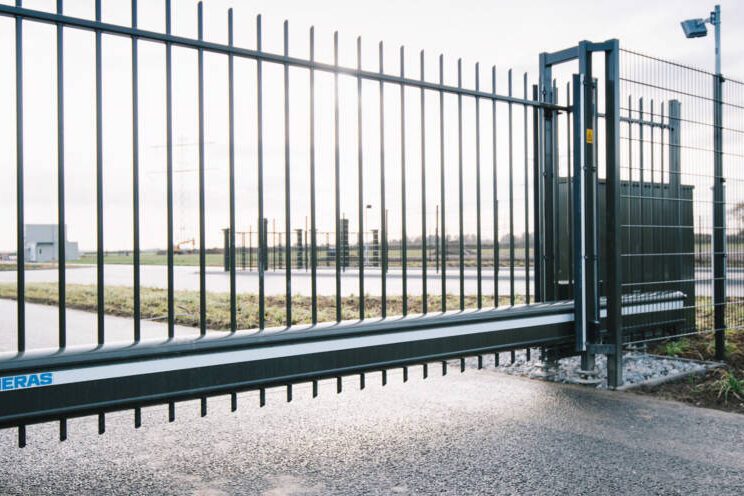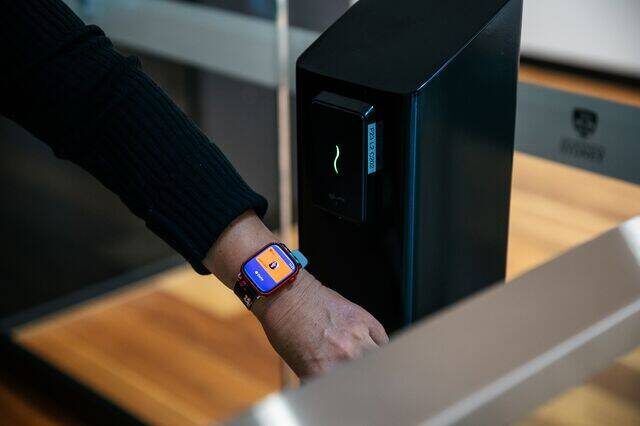Joseph Clarke, Assistant Editor of Security Buyer, Simon Barnes of Genetec and Zak Doffman of Digital Barriers emphasise the need for integrated physical and cyber security strategies in ports to address current vulnerabilities and anticipate future threats
In today’s interconnected and digitally driven world, port operations, among other critical infrastructure sites, are vital hubs in the global supply chain, necessitating enhanced security measures against a spectrum of escalating threats. Ports are not merely physical spaces; they are complex, multifaceted ecosystems where the digital and physical realms converge. This convergence creates unique security challenges that demand comprehensive and integrated responses.
Ports facilitate a significant portion of global trade, handling countless transactions and transfers of goods daily. The seamless operation of these facilities is crucial to economic stability and international commerce. However, this critical role also makes them attractive targets for a variety of threats, ranging from cyberattacks aimed at disrupting operations to physical threats that can include smuggling, terrorism, or theft.
The digital aspects of port operations—such as automated cargo handling systems, digital logistics tracking, and sophisticated entry and exit systems—introduce vulnerabilities that can be exploited by cybercriminals. These systems are integral to the efficiency and functionality of ports but can also serve as gateways for significant disruptions if compromised.
Conversely, the physical aspects of port security, which include the protection of boundaries, monitoring of cargo, and screening of personnel, are equally vital. These measures prevent unauthorised access and ensure that the physical operations are not sabotaged. The vast areas covered by ports, often located adjacent to urban centres or critical infrastructure, complicate surveillance and control, increasing the risk of security breaches.
Given their dual nature, securing ports requires a strategy that addresses both cyber and physical threats simultaneously. This approach should not only focus on implementing robust security measures but also on creating resilient systems that can anticipate, withstand, and recover from attacks. The integration of advanced technologies such as AI-driven surveillance, real-time monitoring systems, and cybersecurity protocols is essential. These technologies enhance the ability to detect and respond to incidents quickly, reducing potential damages and ensuring the continuity of operations.
As critical nodes in the global supply chain, ports must adopt a holistic and proactive security posture that guards against the increasingly sophisticated and varied nature of threats. This involves not only fortifying physical and digital defenses but also fostering a culture of security awareness and collaboration among all stakeholders involved in port operations.
Integrated Approach to Physical and Cyber Security
Simon Barnes, Business Development Manager at Genetec, emphasises the urgent need for an integrated approach to security within ports, pointing out the often overlooked interconnectedness of physical and cyber threats. “Discussions of the physical and cybersecurity of port operations are often handled as two distinct conversations, which fails to account for their interdependence,” he asserts. This insight is crucial, as it highlights the necessity of a cohesive security strategy that effectively harmonises both aspects to bolster overall protection.
Further elucidating on this point, Barnes explains the dual functionality of physical security systems: “Physical security systems, such as video surveillance and access control, are crucial to preventing physical intrusion. However, they are also potential entry points for cyber intrusions.” This dual nature presents a significant challenge, as the integration of digital and physical security systems can inadvertently create vulnerabilities. Barnes stresses the need for heightened collaboration between IT and physical security teams: “It’s time for IT and cybersecurity professionals within ports to take a much closer interest in the physical security systems that are deployed within their organisations.”
Barnes also addresses the broader economic implications of security breaches, which can extend beyond direct attacks to include unintended disruptions with serious economic consequences. “Whilst these obstacles were not derived from malicious activity, they do highlight the impact that unplanned port disruption can have on local economies,” he observes. This comment underscores the fact that robust security measures can mitigate not only the risks of targeted cyber and physical attacks but also the potential collateral damage from other disruptions that can cripple local economies.
The comprehensive integration of security measures involves both safeguarding against external threats and bolstering internal processes to minimise vulnerabilities. “No port is entirely secure, as they are public-facing and cover large geographic areas,” Barnes elaborates. He points out the inherent challenges posed by the extensive and often publicly accessible nature of port facilities, which can leave them vulnerable to a range of threats from both external and internal sources.
Barnes advocates for a security paradigm within port operations that does not merely layer physical and cyber defenses but fully integrates them. This integrated approach is crucial for addressing the multifaceted threats facing modern ports, ensuring that security measures are as seamless and effective as the operations they protect. This strategy is not only about preventing breaches but also about creating a resilient infrastructure capable of maintaining continuity and safeguarding the economic interests tied to global shipping and logistics…
Read the full article for free in our latest issue here.
Never miss a story… Follow us on:
Security Buyer
@SecurityBuyer
@Secbuyer
Media Contact
Rebecca Morpeth Spayne,
Editor, Security Portfolio
Tel: +44 (0) 1622 823 922
Email: editor@securitybuyer.com









